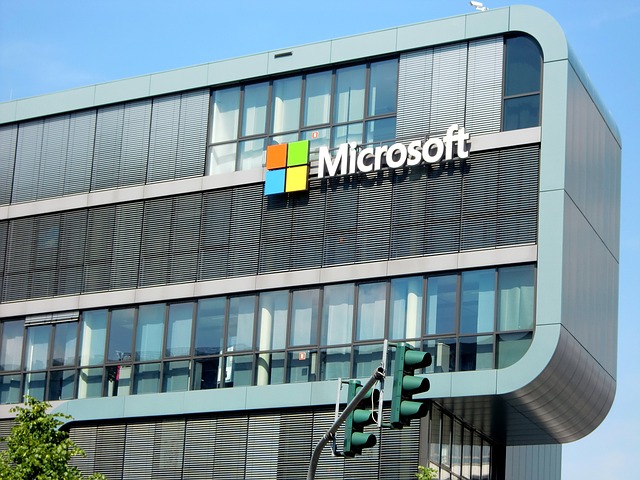

Daily Music Recommendation: Enjoy Terry Lin’s “Parting”, an emotionally stirring classic melody.
Technology Perspective: According to the latest data from China Academy of Information and Communications Technology, domestic mobile phone shipments in March dropped by 5.5% year-on-year to 21.38 million units, including 20.218 million smartphones, marking a 6.2% decline year-on-year. Summing up the first quarter of this year, mobile phone shipments reached 67.415 million units, a 7.4% increase from the same period last year, of which smartphone shipments accounted for 63.773 million units, a 5.8% increase year-on-year.
Industry Dynamics:
Tesla CEO Elon Musk’s recent swift visit to China has sparked heated discussion on the topic of “Tesla’s full self-driving application in China.” Reports indicate that Tesla plans to launch an “autonomous taxi” service in China. On this matter, the Chinese government may initially allow testing domestically as a demonstration, but FSD (Full Self-Driving system) has not yet received comprehensive approval for widespread use in China.
Climate Change: According to a report from the Copernicus Climate Change Service, the Earth has just experienced the hottest April on record, breaking the record for the highest monthly average temperature for the eleventh consecutive month. As greenhouse gas concentrations rise, the phenomena of new global temperature highs will become increasingly frequent.
Economy and Finance:
The Ministry of Finance and the Ministry of Water Resources jointly announced that this year a total of 7 billion yuan will be allocated from central fiscal funds for the maintenance of rural water supply and the construction of small water diversion projects. The goal is to achieve a nationwide rural tap water coverage rate of 92% by the end of 2024, and the proportion of the rural population covered by large-scale water supply projects to reach 63%.
Solar Activity Monitoring: The Space Weather Monitoring and Early Warning Center discovered intense eruptive activity on the Sun from May 3 to May 8, with six eruptions reaching X-class intensity. This marks the first time in nearly two decades that X-class flares have occurred so frequently. However, since only a very small amount of electromagnetic radiation and high-energy particles can reach the vicinity of Earth, the impact of these solar flares on human health is negligible, and the public should not be overly concerned.
Global Markets: Argentina, as the world’s third-largest corn exporter, is currently suffering from pest infestations in its main corn-producing regions. A significant drop in expected yield may lead to an increase in corn prices. According to data from the Rosario Board of Trade, this year’s corn output forecast has been reduced by 6.5 million tons to 50.5 million tons.
Medical and Health:
AstraZeneca stated on May 7 that due to an oversupply of vaccines during the COVID-19 pandemic period, they have begun to withdraw their COVID-19 vaccine globally. Additionally, discussions about rare side effects are ongoing, and AstraZeneca has acknowledged in court documents that its vaccine may cause rare side effects such as cerebral blood clots.
Real Estate Market:
A report from CICC pointed out that the overall net profits of 103 A-share real estate companies on the mainland dropped by 95% in the first quarter, with profits of state-owned enterprises declining by 68% year-on-year to 2.6 billion yuan. Despite pressure across the industry, high-quality state-owned enterprises may exhibit stronger resilience due to their relatively stable contract liability scale and controllable profitability. In addition, during the “May Day” period, the number of new home transactions in Zhengzhou hit a near two-year high record, and relatedly, the housing demand driven by educational needs also showed an upward trend.
According to market rumors, Hangzhou may soon fully lift restrictions on the purchase of new homes. Meanwhile, it is still indicated that the new home purchase policies in the Shangcheng District, Gongshu District, Xihu District, and Binjiang District remain unchanged, with non-local residents required to consecutively pay one month of social insurance to be eligible to buy a property. Some analysts point out that given the cooldown in Hangzhou’s real estate market this year, the local government may introduce new significant regulatory measures.
Recently, Hefei issued a draft notice regarding the adjustment of the maximum loan amount for individual housing provident funds. The draft suggests that for families where both parties make regular contributions, the maximum loan amount will be adjusted to 1 million yuan; for families with multiple children buying their first home, the maximum amount for provident fund loans will increase to 1.2 million yuan; and for individual contributors, the maximum loan amount will also be raised to 700,000 yuan.
The cities of Tangshan, Qinhuangdao, and Langfang in Hebei province announced that starting from May 7th, they will phase out the lower limit of the interest rate for commercial personal housing loans for first homes. Following the introduction of this policy, banks in the above-mentioned areas have begun to implement the interest rate reduction. Previously, the lower limit for first mortgage rates in these areas was set to “LPR-50BP,” but now, the lowest mortgage rate has been reduced from 3.45% to 3.35%.
In the stock market, the Shanghai Composite Index reported a fall of 0.61% to 3128.48 points, with a turnover of 367.22 billion yuan; the Shenzhen Component Index fell by 1.35% to 9638.82 points, with a turnover of 497.16 billion yuan; the ChiNext Index fell by 1.45% to 1865.11 points, with a turnover of 225.53 billion yuan. Generally speaking, most stocks showed a downward trend, with more than 4200 individual stocks falling. The total turnover in both markets was 864.4 billion yuan, a decrease of 104.3 billion yuan compared to the previous trading day. In terms of sector performance, cell immunotherapy, synthetic biology, pork, and precious metals sectors led gains, while artificial intelligence corpus, high-speed copper cable connections, mobile games, and Huawei Ascend sectors experienced larger declines. Northbound funds saw a net outflow of 4.044 billion yuan throughout the day, with Shanghai Stock Connect representing a net outflow of 1.999 billion yuan and Shenzhen Stock Connect a net outflow of 2.045 billion yuan.
In the Hong Kong market, the Hang Seng Index fell by 0.9%, closing at 18313.86 points; the Hang Seng Tech Index fell by 1.29%, closing at 3872.01 points; the Hang Seng China Enterprises Index fell by 1.07%, closing at 6456.72 points. SaaS concept stocks and new material concept stocks led gains, with Xiaomi Group’s share price rising by over 6%; while rent-purchase parity concept stocks and Chinese property stocks led declines. Southbound funds saw a net inflow of 1.79 billion Hong Kong dollars, with Hong Kong Stock Connect (Shanghai) seeing a net inflow of 574 million Hong Kong dollars and Hong Kong Stock Connect (Shenzhen) a net inflow of 1.217 billion Hong Kong dollars.
In other market data, as of May 8, the total number of listed companies on the Beijing Stock Exchange was 248, with no new companies added on that day. The total market capitalization reached 349.392 billion yuan, with a turnover of 4.372 billion yuan.
The latest data on the financing balances of the two markets shows that as of May 7, the financing balance of the Shanghai Stock Exchange was 789.312 billion yuan, an increase of 1.522 billion yuan from the previous trading day; the financing balance of the Shenzhen Stock Exchange was 701.534 billion yuan, an increase of 1.428 billion yuan from the previous trading day. The total financing balance of both markets amounted to 1490.846 billion yuan, an increase of 2.95 billion yuan from the previous trading day.
According to reports from the Shanghai Securities News, since the beginning of this year, 24 A-share companies have been determined to delist, of which 9 companies have completed the delisting process.
Poor performing and problematic enterprises are gradually being eliminated from the stock market, reflecting the increasingly significant resource allocation function and the survival of the fittest mechanism of the A-share market. It is expected that more enterprises will exit the stock market through diversified means in the future, and a normalized pattern of fast and timely delisting is gradually being established.
Since the introduction of the new “National Nine Articles” measures, regulatory penalties for securities intermediary institutions have been further strengthened. As of May 7, a total of 59 penalty notices have been issued to 21 securities firms. The recent penalty notices are not only more frequent but also cover a wider range, especially with an increase in penalty notices for leading securities companies.
In the first quarter, the semiconductor packaging and testing industry achieved operating revenue of 17.592 billion yuan, a year-on-year increase of 20.69%; net profit reached 399 million yuan, a year-on-year surge of 159.66%. Among the 13 A-share market listed companies in the integrated circuit packaging and testing sector, more than sixty percent of companies reported positive news. After a two-year profit decline, the packaging and testing industry is expected to return to a growth trend this year.
In April, a total of 513 private institutions registered 797 private equity securities products, a month-on-month increase of 50.66%. The enthusiasm for private equity securities product registration continues to rise, with both the number of private institutions and the number of private equity securities products reaching a new high for the year. Among them, equity strategy products are the main focus.
The stocks favored by social security institutions are gradually emerging, with social security institutions appearing on the list of top ten circulating shareholders of more than 800 listed companies in the first quarter. They still prefer large financial sectors, especially bank stocks, and have increased allocations in utilities, oil, non-ferrous metals, pharmaceuticals, and machinery stocks; whereas allocations in sectors like power equipment, computers, food and beverages, communications, and home appliances are trending downwards.
Lower-tier cities have demonstrated stronger economic resilience and consumption potential compared to first-tier cities in terms of residents’ income and expenditure, food and drink consumption, and mobility. Consumption in lower-tier cities is expected to unleash greater market potential, and they tend to pursue the ultimate cost-effectiveness in their consumption choices. Therefore, investors should actively pay attention to investment opportunities in the sinking market in sectors such as food and beverages, textiles, and garments.
On the eve of “May Day,” guidelines for private equity investments in Snowball structured derivatives have been regulated. This regulation may have a short-term impact on the prime brokerage services of securities firms, but it also helps to strengthen the market position of top-tier brokers, potentially benefiting those securities firms with strong capital, developed institutional services, and robust product-raising capabilities.
Laryngeal Shares has noticed that certain media and platforms such as stock forums have started discussing matters related to the change in the company’s control rights. The company’s controlling shareholder has changed to Hangzhou East Wisdom Equity Investment Fund Partnership. At present, East Wisdom has no plans for any significant capital operations for the company, and there is no equity investment connection between the company and New Oriental Group.
Tom Cat Co. and its affiliates have recently received a warning letter from the Zhejiang Securities Regulatory Bureau. The warning letter points out that, during 2020-2022, the company failed to effectively supervise its invested subsidiaries, Guangdong Tom Cat and Zhejiang Xiangxin Cultural Tourism Industry Group Co., Ltd., and its subsequent management was not standardized, leading to inaccuracies in the “Internal Control Self-Evaluation Report” issued by the company.
Weilu Biotech (sixth consecutive trading day with a price limit up): The main business involves developing, producing, and selling enzyme preparations, micro-ecological preparations, and animal health products. Although the company has established a technology innovation lab in the field of synthetic biology, it is still in the early stages of strain laboratory R&D and quite a distance from scaled production.
Xingye Shares (fourth consecutive trading day with a price limit up): The company’s sales of brake pad resins for China’s independently developed large passenger aircraft, the C919, are negligible and contribute almost nothing to the company’s total revenue for the year 2023, accounting for approximately 0.01%.
Baichuan Shares (fourth consecutive trading day with a price limit up): The company’s current production and business operations remain normal, its main business has not changed, industry policies have not undergone significant adjustments, and its internal production and business order are well-organized. The company, controlling shareholder, and actual controller all declare that there is no significant information that should be disclosed but has not been disclosed.
Jimin Medical (second consecutive trading day with a price limit up): Currently, the company’s stem cell drug research and development projects are in the preclinical stage and are still in the early stages of research and development. The development cycle of innovative drugs is long, complex, and high-risk, with many uncertainties during the research and development process.
Ruifeng Advanced Materials: The company’s stock price has experienced a cumulative deviation exceeding 30% over three consecutive trading days. Its holding subsidiary, Ruifeng Yu Energy, mainly engages in R&D, production, and sales of black phosphorus and related technologies and products. The industrialization technology for black phosphorus has a high barrier to entry and significant uncertainties, with a limited impact on the company’s performance expected this year.
*ST Meishang: As of May 8th, the closing price of the company’s stock has been below 1 yuan for twenty consecutive trading days, hence it will be delisted by Shenzhen Stock Exchange. The company’s shares will be suspended from trading starting May 9th. It is reported that the company and its actual controller, Wang Yingyan, are maintaining normal contact and communication. Wang Yingyan is currently in China, holding Chinese nationality, and does not have permanent residency abroad. The false reports about her have been corrected.
IT Home: According to reports, Jikrypton is expected to be listed on the NYSE on May 10th, under the ticker symbol “ZK”. Currently, the company’s IPO subscription has nearly quintupled and ended one day ahead of the original schedule. In this IPO, the company plans to issue 17.5 million American Depository Shares (ADS), with an expected price range of 18 to 21 USD per share.
- Securities Daily: Currently, nearly 650 billion yuan of funds are accumulated in the futures market; gold, which has seen an increase of 8.8 billion yuan in the past month, continues to attract funds. Due to recent significant fluctuations in international fundamentals, the prices of resource commodities have risen, such as precious metals like gold and silver, and non-ferrous metals like copper. From a short-term perspective, these commodities still offer investment opportunities, and investors can choose the right time to participate.
- Henan Province: Plans to focus on implementing three major programs to upgrade automobiles, home appliances, home decor, and kitchen and bathroom facilities. From May 8th until the end of the year, individual consumers who scrap fuel vehicles that meet the National III emission standards or lower, or have used new energy vehicles for more than 6 years, and purchase new energy vehicles, will be given a subsidy of 10,000 yuan. At the same time, car manufacturers and sellers are encouraged to independently organize used car exchanges and provide subsidized promotional activities.
- Finance Breakfast News: In recent hot spot tracking, the quotations of various vitamins have risen. As of April 26th, the domestic vitamin price index reached 85.6, which has increased by 7.7% since the beginning of the year.
Market prices are showing signs of revival, with many factors driving a broad industry outlook.
The development of various industries is fruitful, and different fields continue to break their performance and records. Specifically:
Strict management in the lithium battery industry: The Ministry of Industry and Information Technology is pushing lithium battery companies to strengthen innovation and quality improvement, requiring that the cost of research and development and process improvement reach a certain minimum proportion. In addition, standards are set for the energy density of energy-type single cells and battery packs.
Significant growth in the broadcasting and network audiovisual industry: The State Administration of Radio and Television released data showing steady growth in total industry revenue, with the network audiovisual sector showing strong growth momentum, accounting for more than half of the industry’s revenue ratio.
Positive performance in the e-commerce logistics sector: The e-commerce logistics index published by China Federation of Logistics & Purchasing has been rising continuously, especially the business volume of rural e-commerce logistics, which shows a rapid growth trend.
Continuous reform in professional sports events: The Director of the General Administration of Sport, Gao Zhidan, stated that they are promoting the upgrade of the football and basketball professional competition systems, hoping to improve the quality and influence of competitive sports through the introduction of market and various forces.
Challenges facing the semiconductor industry: Sylvia Hu of GlobalWafers pointed out that inventory de-stocking in semiconductors is not as expected, affected by factors such as exchange rate fluctuations, changing the current situation and posing challenges to company revenues.
Rapid growth in the electric vehicle industry: A report by Omdia shows that China, Europe, and North America lead globally in terms of electric vehicle ownership and the installation base of charging interfaces.
Severe impact of climate change on Latin America and the Caribbean: The World Meteorological Organization has noted that phenomena like El Niño and climate change have caused the region to suffer major impacts from extreme weather, affecting the lives of local residents and the development of the region.
Technological breakthroughs in the photovoltaic industry: In company news, Longi Green Energy has achieved significant technological breakthroughs in photovoltaic technology, with their developed battery conversion efficiency setting a new world record.
Longi continues to make technological breakthroughs in the field of solar cells, setting a new world record for the 17th time in cell efficiency.
Apple’s price reduction strategy seems to be effective, as iPhone shipments in the Chinese market in March increased by about 12% compared to the same period last year, indicating that the company’s efforts to prevent sales decline are gradually paying off. According to reports, the shipment volume of foreign brand smartphones during this period reached 3.75 million units, the majority of which were Apple products.
VinFast announces plans to launch its electric cars, electric motorcycles, and electric bicycles in the Philippines, and intends to establish a national dealership network there.
Global Perspective:
Statistics from the South Korean Ministry of Trade, Industry and Energy show that in April, South Korea’s car exports reached $6.8 billion, an increase of 10.3% year-on-year, setting a new high for monthly export value. Demand for hybrid vehicles in the European and American markets has increased, and the export value of new energy vehicles also rose by 11.6% year-on-year, reaching $2.29 billion, once again setting a record. Since the beginning of the year, the total value of car exports has risen by 4.7% year-on-year, totaling $24.3 billion, a historic high for the same period in history.
Financial Data:
According to the information from the New Third Board, as of May 8th, there are a total of 6,138 listed companies, with 4 fewer listed companies that day, and the transaction amount reached 211 million yuan. The three-board making index closed at 830.66, down by 0.33%, with a daily transaction amount of 109 million yuan.
The domestic commodity futures market mostly showed a downward trend, with coking coal falling more than 4%, coke near 4%, caustic soda and iron ore both near 3%, and nickel in Shanghai, alumina, tin in Shanghai, and international copper prices fell by more than 2%; whereas Europe line container shipping and manganese silicon rose by more than 3%, caustic soda near 2%, and cotton yarn, white sugar, soybean meal and liquefied petroleum gas prices rose by more than 1%.
In the government bond market, the 2-year treasury futures main contract fell slightly by 0.02% to 101.650. The 5-year government bond futures contract stood steady at 103.365, while the 10-year government bond futures main contract rose slightly by 0.06% to 104.425. The yield of the 10-year government bond rose by 0.59 basis points to 2.3%, and the yield of the 10-year policy bank bond fell by 2.28 basis points to 2.35%.
The main contract of crude oil futures 2406 at the Shanghai International Energy Exchange closed at 611.3 yuan per barrel, down by 6.1 yuan, a decrease of 0.99%. The total trading volume for the day was 125,539 lots, with open interest rising by 3,411 lots to 55,119, the main contract traded 89,447 lots, and open interest increased by 1,329 lots to 23,057 lots.
The People’s Bank of China performed a 20 billion yuan 7-day reverse repo operation, with the winning interest rate maintained at 1.8% unchanged. As there were no reverse repo operations due, a net injection of 20 billion yuan was realized that day.
The Shanghai Interbank Offered Rate (Shibor) shows that the overnight rate was quoted at 1.8370%, up by 9.30 basis points. The 7-day rate was 1.8670%, up by 2.20 basis points, and the 3-month rate was 1.9900%, down by 0.60 basis points.
Regarding the RMB exchange rate, at the 16:30 closing time, the onshore RMB to US dollar exchange rate was reported at 7.2261, falling by 0.1580%. The RMB central parity rate was reported at 7.1016, down 0.0197%. The Non-Deliverable Forwards (NDF) indicated the 3-month rate at 7.1365, the 6-month rate at 7.1240, with 1-year and 2-year rates at 7.0665 and 6.9740 respectively.
The Shanghai Environment and Energy Exchange reported that on May 8, the national carbon market saw a carbon emissions quota listing agreement transaction volume of 117,192 tons, with a turnover of 11.5162 million yuan. At the close of trading, the carbon emissions quota traded at a price of 101.09 yuan/ton, falling by 0.57% from the previous trading day.
The Nikkei 225 index fell by 1.63%, closing at 38,202.37 points. The South Korean KOSPI index rose by 0.39%, closing at 2,744.92 points.
The Dow Jones Industrial Average increased by 0.44%, closing at 39,056.39 points. The NASDAQ Composite index slightly fell by 0.18%, closing at 16,302.76 points. The S&P 500 index was unchanged, closing at 5,187.67 points.
The UK’s FTSE 100 index closed up by 0.49%, at 8,354.05 points; Germany’s DAX 30 closed up by 0.37%, at 18,498.38 points; France’s CAC 40 closed up by 0.69%, at 8,131.41 points.
COMEX gold futures prices fell by 0.35%, at $2,316.1 per ounce.
WTI crude futures for June increased by 0.78%, at $78.99 per barrel; Brent crude futures for July went up by 0.51%, at $83.58 per barrel.
The Baltic Dry Index rose by 5.76%, to 2,203 points.
Domestic major vitamin producers released their first-quarter financial reports for 2024, showing an increase in market warmth with most product prices rebounding. Despite an oversupply of vitamin A and E, prices are expected to rise in the short term due to production cuts and the reduction of overseas inventory. Vitamin A prices are 84 yuan/kg, up 3.5 yuan; vitamin E prices are 67.5 yuan/kg, up 1.5 yuan.
The downstream vitamin market is primarily the feed industry, with rigid demand and low cost proportion. The vitamin industry is a high-tech, high environmental threshold sector, characterized by oligopolistic competition and barriers to market entry, leading to a short-term market rebound driven by factors such as overselling, low inventory, production inspections, and high costs. The end phase of overseas inventory rundown combined with the continuous recovery of domestic demand will support a long-term positive outlook.
The global vitamin supply is highly concentrated and, amidst weak demand at the bottom of the breeding cycle, some companies are preparing to exit the market. The vitamin industry, with high technological barriers, has taken shape after industry consolidation, with a competitive landscape dominated by overseas companies like BASF, DSM, and leading Chinese companies. DSM announced that it would complete the divestiture of its animal nutrition and health business by 2025, selling some vitamin plants.
The supply chain for vitamins A and E is gradually recovering, and VA prices have been fluctuating due to price wars in the market competition. Vitamin D3 has seen an improved industry structure following the implementation of new national standards. The B-group vitamin market has seen a significant addition of new production capacity.
In the feed additive industry of methionine, vitamins, and others, as the supply and demand relationship gradually balances out, the overall layout of the industry has been optimized. In this process, companies with cost and scale advantages have stood out. They gain market competitiveness through economies of scale and cost control. Such enterprises have more potential for long-term sustainable development in the industry.
“Water striking stones makes a sound; people being inspired have grand aspirations.” —— Qiu Jin
This saying is profound, suggesting that the environment can stimulate potential, just as the flow of water elicits echoes from stones. Similarly, a favorable industry environment can motivate the ambitions and aspirations of entrepreneurs and teams, leading them to achieve even greater accomplishments.
[ad_2]







